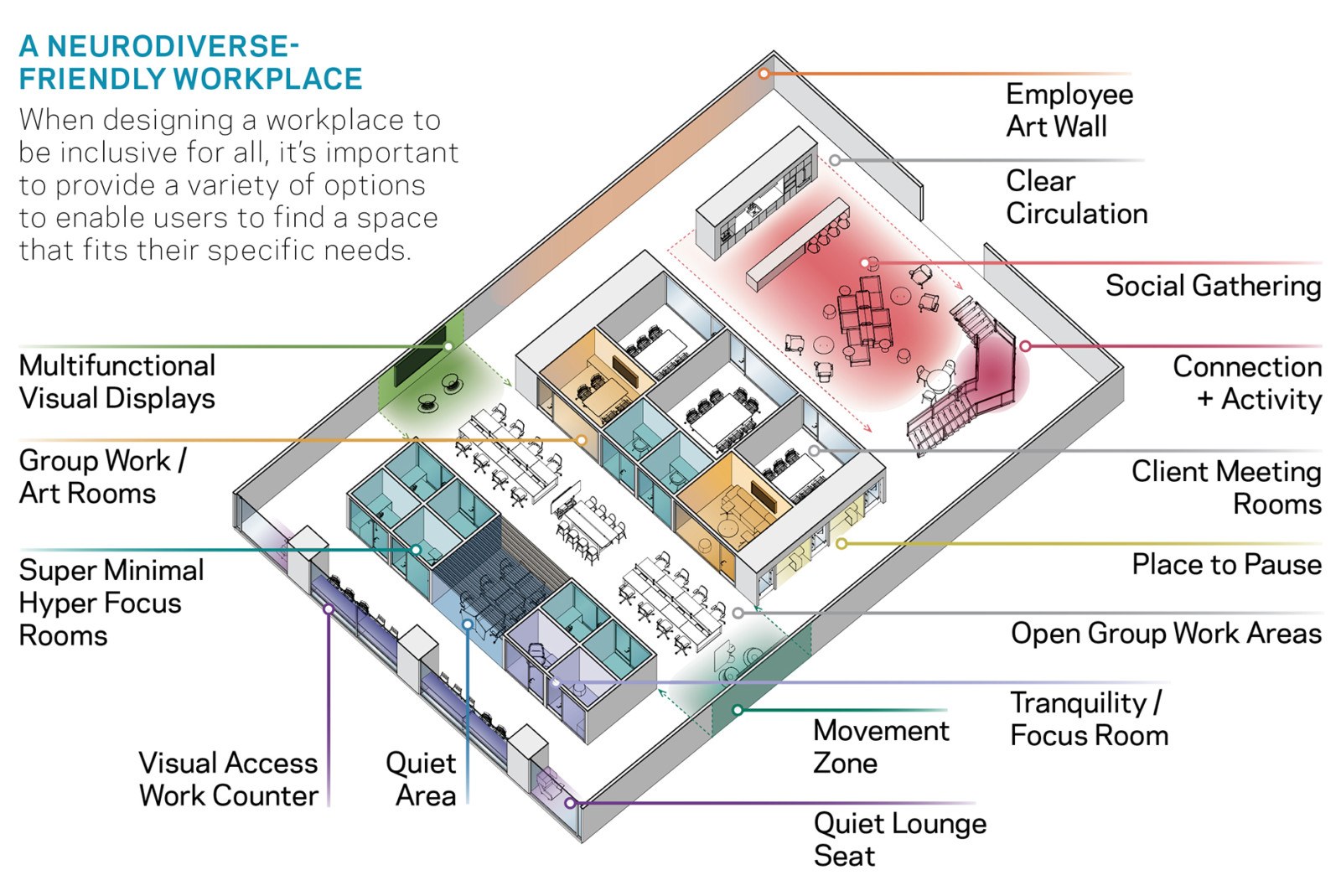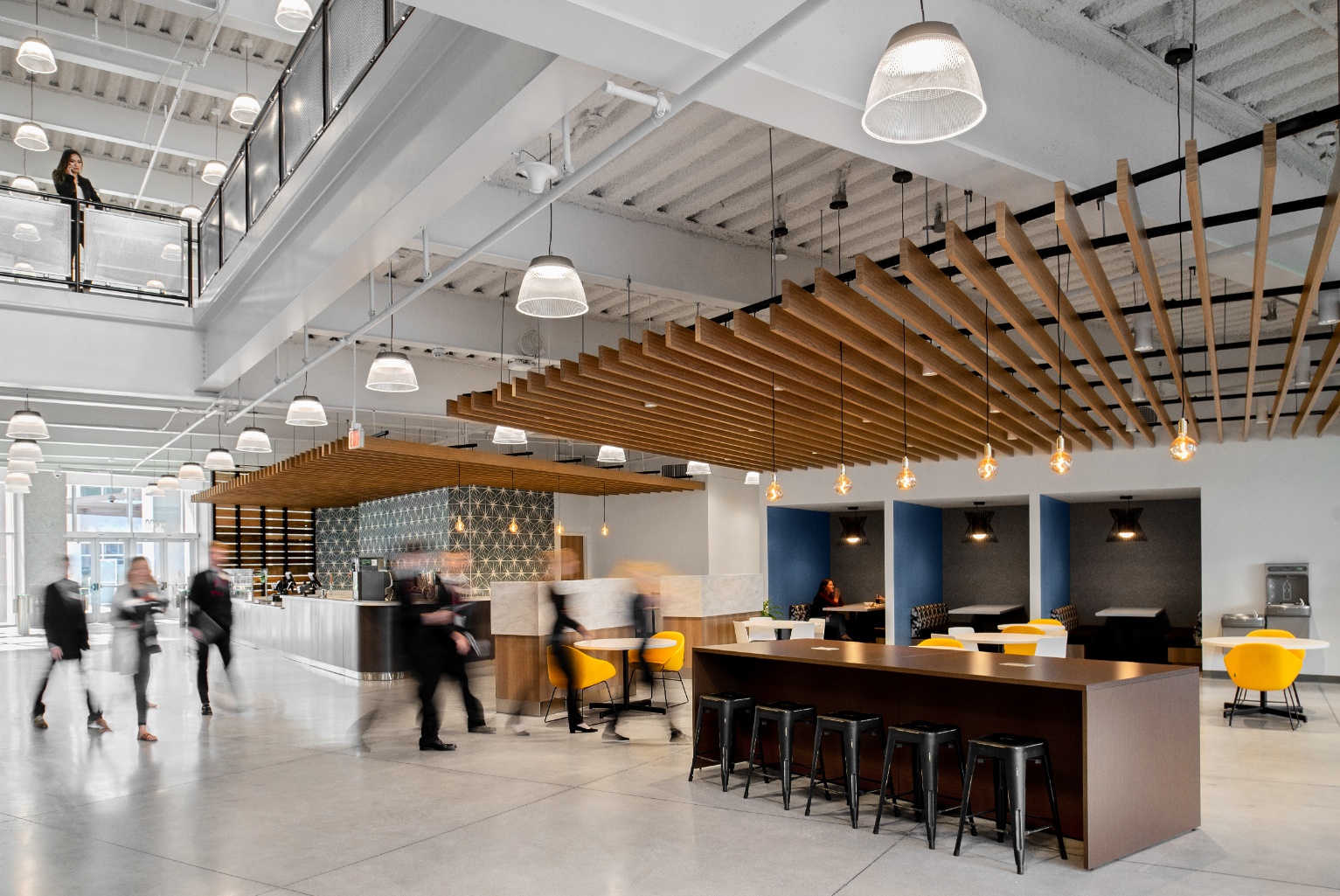Report investigates how organizations can rethink their space to be more inclusive and to help an increasingly neurodiverse workforce thrive.
HOK has issued a latest report, “Designing a Neurodiverse Workplace,” exploring how organizations can create physical work environments that support the full range of employees: neurotypical and neurodivergent. HOK’s comprehensive report includes interviews with experts as well as suggestions for design strategies, operational changes and individual adjustments that can support neurodiverse and neurotypical staff alike.
Approximately 15-20 percent of people are neurodivergent, i.e., have one of a collection of conditions that includes autism spectrum disorder, attention deficit hyperactivity disorder and dyslexia. Employers are beginning to recognize that, in addition to simply being the right thing to do, accommodating neurodiverse people can provide a significant competitive advantage. This is leading to a range of more inclusive policies, programs and procedures, though this recognition is only just beginning to affect workplace design.
“Designers have an opportunity to influence the physical and cultural adaptations required to make workplaces more inclusive,” said HOK’s Kay Sargent. “We need to ensure that the most valuable assets and currency of every business—its people—have the opportunity to be happy, healthy, engaged and empowered.”
The report explores how workplace designers and strategists can help organizations create more inclusive environments. Key observations include:
- Designing for neurodiverse populations will benefit a company’s entire workforce.
- While neurodiverse staff can bring exceptional talents—including creative storytelling, coding, empathy, pattern recognition and problem solving—they cannot always thrive within existing workplace norms and practices.
- Different neurological conditions manifest in different ways and even those sharing the same condition experience it to varying degrees.
- Most common workplace challenges center on spatial organization, spatial character, acoustic quality, thermal comfort, lighting and degree of stimulation.
- Ensuring that employees have choices about how and where to work enables them to more effectively manage their own needs and maximize their productivity.
Download a PDF of the “Designing a Neurodiverse Workplace” report.
Note: Neurodiversity is a term used to describe a broad range of conditions, some of which likely will be unresponsive to design solutions. HOK’s approach to inclusive design is based on our experience as designers and architects with the objective of providing a wide range of options for users with different needs. Any attempt to address the needs of neurodiverse individuals should also include review of human resources policies, implementation of technology solutions and building operations among other considerations. HOK does not represent that any design solution discussed in this publication is capable of achieving any specific outcome for an individual user.

